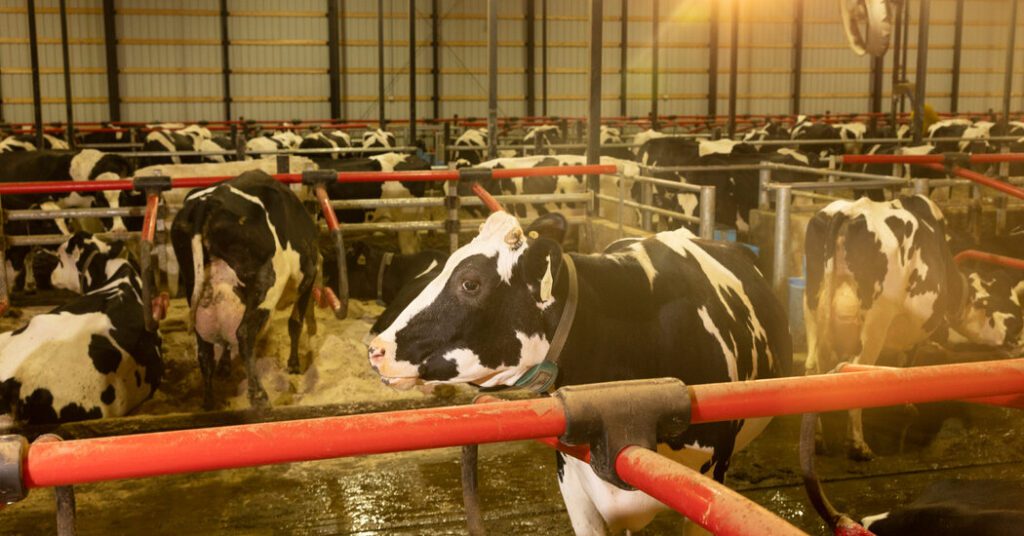Challenges in Combating Bird Flu on U.S. Farms
The ongoing battle against bird flu in the United States has encountered significant hurdles due to administrative changes and funding cuts, impacting critical veterinary and scientific efforts. With over 168 million birds culled to manage outbreaks, and the virus extending its reach to over 1,000 herds across 17 states, experts voice their concerns regarding the current federal response.
Administrative Changes Impacting Response Efforts
Interviews conducted with numerous scientists and federal officials reveal that the transition to a new administration has caused disruptions. Key scientific teams involved in monitoring the virus have been disbanded, while important meetings have been canceled. Moreover, access to essential data for federal scientists has been restricted.
The Department of Health and Human Services has not conducted a public news briefing on bird flu since January, and inquiries into this lack of communication have gone unanswered.
Controversial Strategies and Funding Cuts
Health Secretary Robert F. Kennedy Jr. has proposed allowing the virus to spread unchecked among poultry to discover potentially immune birds. This idea has drawn fierce criticism from scientists, prompting a deeper investigation by Democratic lawmakers into the federal reaction to this outbreak.
The administration has also reduced funding for international monitoring programs aimed at controlling bird flu, particularly at the Food and Agriculture Organization, which oversees measures in 49 countries.
Extending Spread and Recent Findings
Bird flu has now affected various mammal species, including 150 domestic cats and at least 70 human cases, resulting in hospitalizations and fatalities. Recent mutations of the virus have raised alarms, as it appears to be gravitating closer to a form that could spread between humans.
Current Infection Trends
In the last month, the Department of Agriculture confirmed new infections in 47 herds across three states. Although the H5N1 virus is not yet adept at human transmission, recent mutations remind experts of the urgent need for increased monitoring and control efforts.
Need for Comprehensive Monitoring
An international group of virologists has indicated that effective management of bird flu requires ongoing testing of milk from dairy farms, wastewater, and individuals interacting with infected animals. Unfortunately, federal and state authorities currently lack the legal power to mandate testing among farms or personnel.
Government Reactions and Internal Challenges
Efforts to combat the virus have been hindered by internal strife within agencies. Comments from officials indicate a decline in morale due to layoffs and budget constraints affecting operational capacities. Key veterinarians involved in controlling bird flu have experienced significant hurdles, such as limited resources that restrict their ability to travel and respond effectively to outbreaks.
The C.D.C. has faced criticism for drastic measures that have impacted the timely release of viral analysis data, which now lags significantly behind expectations. This delay complicates efforts to monitor the virus’s trajectory and assess its potential threat to public health.
Future Directions
The Biden administration has attempted to revive inter-agency communications regarding bird flu, although these efforts have seemingly diminished in efficacy. With a stockpile of vaccines available, the integration of oversight responsibilities into the C.D.C. has created additional bureaucratic challenges.
Several recent initiatives aim to improve biocontainment practices among egg-laying facilities across various states. Government experts are expected to carry out comprehensive audits to help farmers fortify their protections against the virus.
Conclusion and Considerations for the Future
Despite the ongoing struggles, experts propose that minimizing the virus’s impact on American farms is still attainable. Enhanced testing methods and farming practices focused on biosecurity can make a significant difference. However, the industry must adapt to changing conditions to ensure a sustainable future in managing the ongoing bird flu crisis.


